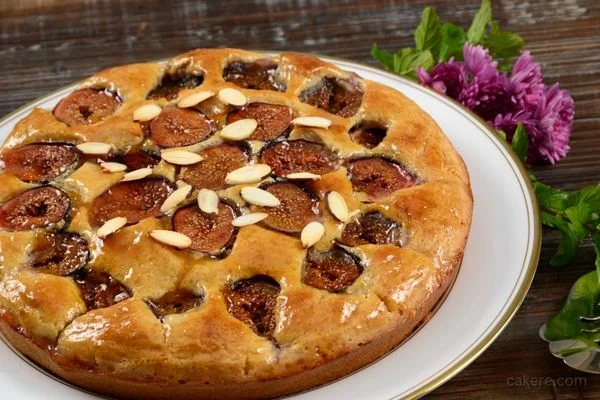Fig cake is a delectable dessert that has been enjoyed by people all over the world for centuries. This sweet and nutritious treat has a long and fascinating history that dates back to ancient times.
From the Mediterranean to the Middle East, fig cake has been an important part of many cultures and cuisines. In this article, we will explore the history of fig cake, its origins, variations, and cultural significance.

Origins of Fig Cake:
Fig cake has been around for thousands of years, with its origins dating back to ancient Greece and Rome. The ancient Greeks used figs as a sweetener in their cakes and other desserts. The Romans also enjoyed figs and used them in their recipes. The popularity of figs spread throughout the Mediterranean and Middle East, and fig cake became a staple dessert in many cultures.
Variations of Fig Cake:
Fig cake comes in many variations, depending on the region and culture. In Greece, they make a traditional fig cake called Sykomaida, which is made with figs, honey, and sesame seeds. In Turkey, they make a fig cake called incir tatlisi, which is made with fresh figs, sugar, and flour. In the Middle East, they make a fig cake called ma’amoul, which is made with a mixture of semolina, flour, butter, sugar, and figs. These variations all have their unique flavors and textures, but they all share the same sweet and delicious taste of figs.
Cultural Significance of Fig Cake:
Fig cake has been an important part of many cultures and has been associated with various traditions and beliefs. In ancient Greece, figs were believed to be a sacred fruit that was associated with fertility and love. In Jewish culture, figs are a symbol of peace and prosperity, and they are often eaten during the Jewish New Year. In Islam, figs are mentioned in the Quran, and they are considered a blessed fruit. Fig cake has also been associated with Christmas in some cultures, with the figs representing the gifts that were given to the baby Jesus.
FAQs
Fig cake is a nutritious dessert that is packed with vitamins and minerals. Figs are rich in fiber, potassium, and calcium, and they are also low in calories.
Yes, fig cake can be made without sugar by using natural sweeteners like honey or maple syrup.
Fig cake can last for several days if stored properly in an airtight container in the refrigerator.
Conclusion
The history of fig cake is a fascinating tale of a sweet and nutritious dessert that has been enjoyed for thousands of years. From its origins in ancient Greece and Rome to its variations in the Middle East and beyond, fig cake has played an important role in many cultures and cuisines. Whether you prefer it traditional or with a modern twist, fig cake is a timeless treat that will always be a favorite among dessert lovers.
